
Southington is a town in Hartford County, Connecticut, United States. The town is part of the Capitol Planning Region. As of the 2020 United States Census, it had a population of 43,501. Southington contains the villages of Marion, Milldale, and Plantsville.

Plantsville is a neighborhood in the town of Southington, Hartford County, Connecticut. It is centered at the merger between South Main Street and West Main Street. As of the 2000 Census there were 10,387 people living in the Zip Code Tabulation Area for zip code 06479, which is assigned the postal city name Plantsville. The Zip Code Tabulation Area includes the entire southwestern corner of the town of Southington, including Marion and Milldale. Beginning in 2015 Plantsville was listed as a census-designated place.

The Hotchkissville Historic District is a historic district in the town of Woodbury, Connecticut, that was listed on the National Register of Historic Places in 1995. The district encompasses most of the historic village of Hotchkissville, which is centered at the junction of Washington and Weekeepeemee roads. The village began as a dispersed rural agricultural community, but developed in the 19th century with the arrival of industry, primarily the manufacture of textiles. Despite this, the village has retained a significantly rural character, and includes a broad cross-section of 18th- and 19th-century architectural styles.
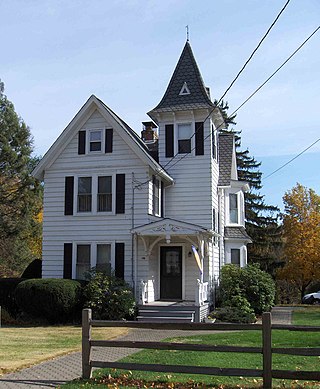
Marion is a neighborhood in the town of Southington, Connecticut. It is generally the area in the vicinity of the intersection of Route 322 and Marion Avenue just north of the Cheshire town line.
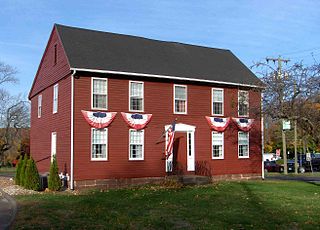
The Jonathan Root House is a historic house at 140–142 North Main Street in Southington, Connecticut. Built about 1720, it is believed to be the oldest surviving colonial building in the town. It was listed on the National Register of Historic Places in 1989, and now houses professional offices.

The Atwater Manufacturing Company is a historic industrial property at 335 Atwater Street in Southington, Connecticut. The company, founded in 1867 and now known as Rex Forge, has long been one of Southington's major industrial employers. The ten extant buildings of the complex date as far back as 1912, and are an important element of the town's industrial past. The property was listed on the National Register of Historic Places in 1988.
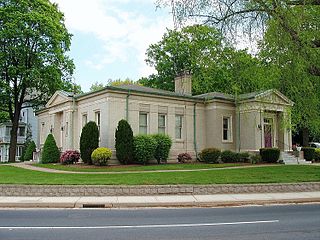
The Southington Public Library is the public library serving Southington, Connecticut. It is located at 255 Main Street in a modern facility erected in 1974. Its first building, constructed in 1902 and located at 239 Main Street, now houses the Southington Historical Center. That building, a fine local example of Classical Revival architecture, was listed on the National Register of Historic Places in 1989.

The Selah Barnes House is a historic house at 282 Prospect Street Southington, Connecticut. Built about 1778 for a local merchant, it is a good local example of vernacular Georgian architecture. It was listed on the National Register of Historic Places in 1989.

The Blakeslee Forging Company is a historic industrial complex at 100 West Main Street in the Plantsville area of Southington, Connecticut. The surviving six buildings, dating to about 1910 or later, were developed for a company founded in 1877 that specialized in drop forging. The buildings are well preserved structures typifying industrial buildings found in Southington from that era. The complex was listed on the National Register of Historic Places in 1988.

The Clark Brothers Factory No. 1 was a historic industrial complex at 1331 South Main Street in the Milldale area of Southington, Connecticut. Developed beginning in the 1850s, it was one of the nation's largest sources of carriage bolts. The complex listed on the National Register of Historic Places in 1988 consisted of a group of brick buildings dating to 1893 and later. It has since been entirely demolished, and the land stands vacant and overgrown.

The Clark Brothers Factory No. 2, also known as Clark Brothers Bolt Company, is an industrial complex at 409 Canal Street in Southington, Connecticut. Built between 1911 and 1918, the complex is a good example of vernacular industrial architecture of the early 20th century, and was home to one of the community's major industrial employers. The complex was listed on the National Register of Historic Places in 1988.
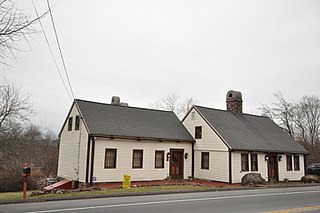
The Avery Clark House is a historic house at 1460 Meriden Avenue in Southington, Connecticut. Built about 1792, it is one of the town's surviving 18th-century houses, and well-preserved example of late Georgian vernacular architecture. It was listed on the National Register of Historic Places in 1989.

The Timothy Hart House is a historic house at 521 Flanders Road in Southington, Connecticut. Built about 1810, it is a well-preserved local example of vernacular early 19th-century Federal period architecture. It was listed on the National Register of Historic Places in 1989.
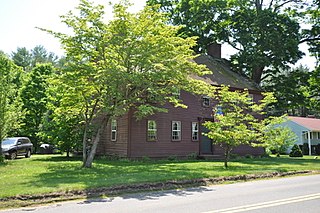
1010 Shuttle Meadow Road is a historic house at 1010 Shuttle Meadow Road in Southington, Connecticut. Built about 1772, it is one of the town's few surviving 18th-century houses. It was listed on the National Register of Historic Places in 1989.
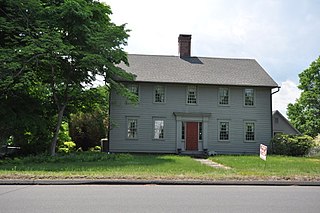
590 West Street is a historic house in Southington, Connecticut. Built about 1790, it is one of the town's small number of surviving 18th-century houses, and a well-preserved example of Georgian colonial architecture. It was listed on the National Register in 1989.

The Hurwood Company is a historic industrial complex at 379 Summer Street in Southington, Connecticut. Built beginning sometime before 1884, this complex of mainly brick buildings is typical of the town's industrial landscape of the late 19th and early 20th centuries, and was where solid-headed screwdrivers were first manufactured. The complex was listed on the National Register of Historic Places in 1988.
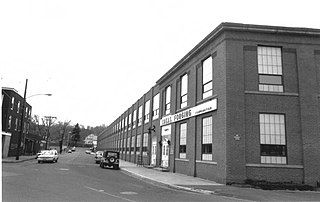
The Peck, Stow & Wilcox Factory was a historic factory complex at 217 Center Street in Southington, Connecticut. Begun in 1870, it was home to the town's largest industrial employer of the late 19th century. Surviving elements of the factory, dating to 1912, were listed on the National Register of Historic Places in 1989. The complex was demolished in 2015 after it was shuttered in 2003.

The H. D. Smith Company Building is a historic industrial building at 24 West Street in Plantsville, Connecticut. With a construction history dating to 1882, it is one of the more architecturally interesting examples of Southington's industrial architecture, and was home to H. D. Smith & Co. from construction to the 1920s. It was listed on the National Register of Historic Places in 1977.

West Street School is a historic one-room school house at 1432 West Street in Southington, Connecticut. Built about 1760, it is the oldest surviving school building in the town. It served the town as a school until 1946, and is now preserved by the Southington Historical Society. It was added to the National Register of Historic Places in 1988.

The Depot Square Historic District encompasses the historic commercial business district of Randolph, Vermont. Developed in the mid-19th century around the facilities of the Central Vermont Railway, the area features a high concentration of well-preserved Second Empire and late Victorian commercial architecture. It was listed on the National Register of Historic Places in 1975.






















